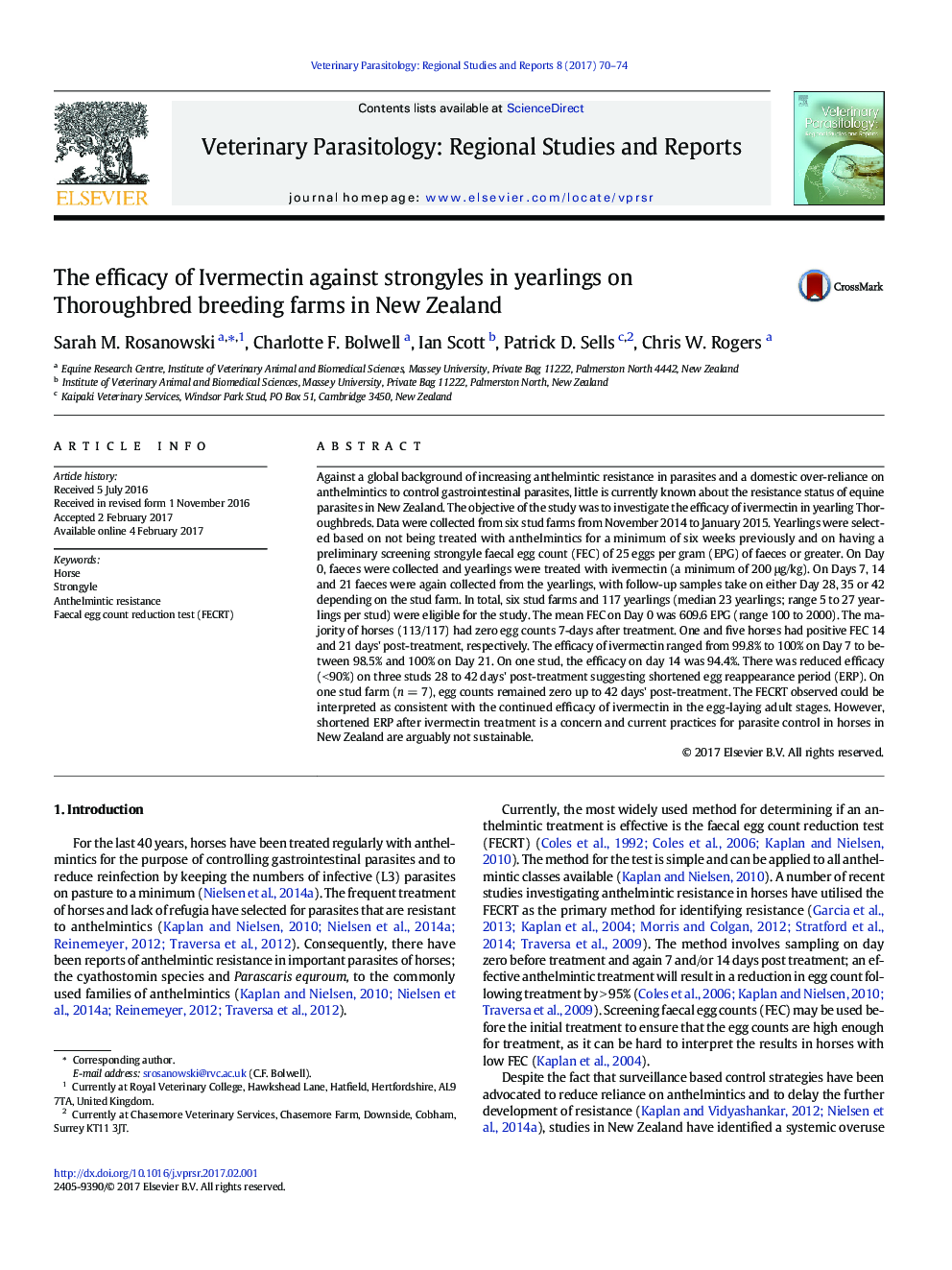| کد مقاله | کد نشریه | سال انتشار | مقاله انگلیسی | نسخه تمام متن |
|---|---|---|---|---|
| 5546039 | 1555866 | 2017 | 5 صفحه PDF | دانلود رایگان |

- Faecal egg count reduction tests used to assess efficacy of ivermectin against strongyles in yearling Thoroughbreds
- 113/117 yearlings had a faecal egg count of zero seven days after ivermectin treatment
- On three out of six stud farms there was a suggestion of shortened egg reappearance periods.
- Shortened egg reappearance period could indicate a decline in ivermectin efficacy against the luminal stages.
Against a global background of increasing anthelmintic resistance in parasites and a domestic over-reliance on anthelmintics to control gastrointestinal parasites, little is currently known about the resistance status of equine parasites in New Zealand. The objective of the study was to investigate the efficacy of ivermectin in yearling Thoroughbreds. Data were collected from six stud farms from November 2014 to January 2015. Yearlings were selected based on not being treated with anthelmintics for a minimum of six weeks previously and on having a preliminary screening strongyle faecal egg count (FEC) of 25 eggs per gram (EPG) of faeces or greater. On Day 0, faeces were collected and yearlings were treated with ivermectin (a minimum of 200 μg/kg). On Days 7, 14 and 21 faeces were again collected from the yearlings, with follow-up samples take on either Day 28, 35 or 42 depending on the stud farm. In total, six stud farms and 117 yearlings (median 23 yearlings; range 5 to 27 yearlings per stud) were eligible for the study. The mean FEC on Day 0 was 609.6 EPG (range 100 to 2000). The majority of horses (113/117) had zero egg counts 7-days after treatment. One and five horses had positive FEC 14 and 21 days' post-treatment, respectively. The efficacy of ivermectin ranged from 99.8% to 100% on Day 7 to between 98.5% and 100% on Day 21. On one stud, the efficacy on day 14 was 94.4%. There was reduced efficacy (< 90%) on three studs 28 to 42 days' post-treatment suggesting shortened egg reappearance period (ERP). On one stud farm (n = 7), egg counts remained zero up to 42 days' post-treatment. The FECRT observed could be interpreted as consistent with the continued efficacy of ivermectin in the egg-laying adult stages. However, shortened ERP after ivermectin treatment is a concern and current practices for parasite control in horses in New Zealand are arguably not sustainable.
Journal: Veterinary Parasitology: Regional Studies and Reports - Volume 8, May 2017, Pages 70-74